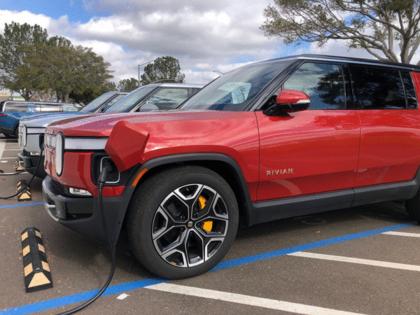California adds 24,000 charging stations in the first half of 2024
Published in Automotive News
If California is going to hit its ambitious electric vehicle targets, drivers need to know there will be plenty of charging stations nearby. State officials just released statistics showing that in the first half of this year, the Golden State added more than 24,000 chargers available to the public.
That means the number of charging stations in California has surpassed 150,000.
The figure includes nearly 138,000 Level 2 chargers that can add 14 to 35 miles of range to a vehicle per hour of charging time and almost 15,000 fast chargers that can add 100 to 250 miles of range in 30 to 45 minutes.
The numbers include private charging stations the public can access.
“The state is all-in on clean transportation, dedicating unprecedented investments to supercharge our transition,” Gov. Gavin Newsom said in a statement. “We’re building a bigger, better charging network – faster.”
Building all that infrastructure costs money, though.
Just this year, the California Energy Commission has approved more than $1 billion in spending for charging projects for cars, trucks and buses. The funding includes $7 million to build at least 653 Level 2 chargers near UC San Diego and $3 million to install at least 40 fast chargers at 10 sites in Southern California to meet demands from transportation network company fleets and the public.
Four years ago, Newsom issued an executive order mandating the elimination of all new sales of gasoline-powered passenger vehicles in California by 2035. The first of a series of staggered state-imposed sales targets for zero-emission vehicles will roll out in just two years.
State officials define zero-emission vehicles as all-electric, plug-in hybrids and hydrogen fuel cell vehicles. At last count, 1.99 million cars and trucks that meet the designation are on California’s roads — more than any other state, by far.
Newsom and energy commission officials recently touted the fact that 25.7 percent of new vehicles sold in California in the second quarter were zero-emission. But auto analysts worry that the pace of electric vehicles has slowed, not just in California but across the country.
Citing softening demand from consumers, Ford Motor last week canceled plans for a large all-electric SUV and General Motors in July pushed back its timeline for a factory that would build electric pickup trucks.
Hybrid vehicles sales are strong but hybrids without plugs do not count toward California’s zero-emission targets.
What’s the difference? A plug-in hybrid runs on electricity for about 20 to 40 miles and then calls on its gasoline-powered engine to extend the vehicle’s range. By contrast, traditional hybrids without a plug rely on the car’s electric motor when operating at low speeds and then shift to the internal combustion engine when additional power is needed.
The energy commission’s $1 billion in spending this year also earmarked $9.5 million to improve and maintain hydrogen refueling stations statewide.
Different than electric vehicles or hybrids, hydrogen fuel cell vehicles combine hydrogen and oxygen to produce electricity, which runs a motor. To fuel the car, a driver pulls up to a pump similar to a conventional gasoline station and pumps hydrogen into the tank. It takes about three to five minutes to fill up and the only emissions are a few drops of water that come out of the tailpipe.
The California Air Resources Board is counting on hydrogen fuel cell vehicles making up more than 10 percent of new cars sold in California by 2035. But building hydrogen fueling stations has been frustratingly slow.
Just 54 stations are in operation, according to California Energy Commission’s dashboard. As of Thursday, just two hydrogen retail stations in the San Diego area are open for light-duty vehicles.
©2024 The San Diego Union-Tribune. Visit sandiegouniontribune.com. Distributed by Tribune Content Agency, LLC.








Comments